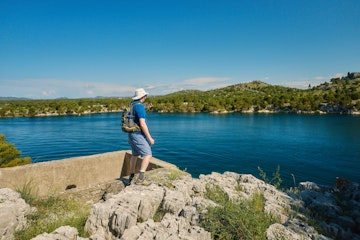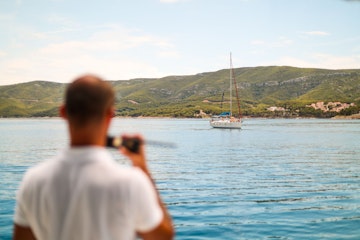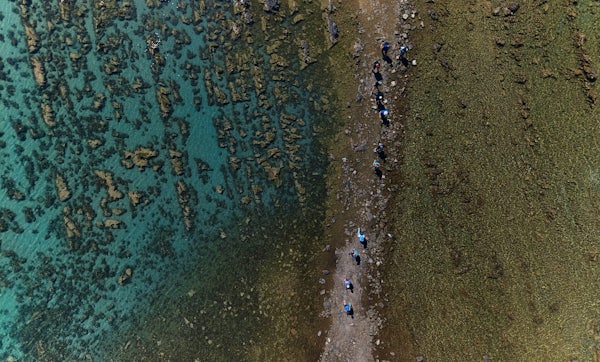If you love the sea, sailing, swimming, snorkelling, or simply enjoying its beauty, you have probably noticed that our seas and oceans are changing. Warmer waters, fewer fish, damaged coral reefs. These are all signs that our planet is under pressure. But there is another, less visible threat to our seas that is just as serious: sea acidification.
The ocean naturally absorbs carbon dioxide (CO₂) from the atmosphere. This natural process helps slow down global warming. But as we burn more fossil fuels (like coal, oil, and gas) seas and oceans end up absorbing too much CO₂. When carbon dioxide from the atmosphere mixes with seawater, it causes a chemical reaction that slowly makes the ocean more acidic. Even a small drop in pH (a measure of how acidic something is) can make a big difference for marine life.
Since 1985, global average surface ocean pH has dropped from 8.11 to 8.04 by 2024, which is about an 18% increase in acidity. The rate of acidification has sped up significantly: ocean surface pH is now decreasing at about 0.017 pH units per decade, a pace not seen in at least 300 million years.

Why Is This a Problem
Many marine creatures like shellfish, sea urchins, and tiny plankton rely on calcium to build their shells and skeletons. Acidic water makes it harder for them to do that. If these species struggle, the entire food web is at risk, meaning also the fish we love to eat.
Corals are especially vulnerable. Acidification weakens their skeletons and slows reef growth. Since coral reefs support a quarter of all marine life, this threatens biodiversity and fisheries around the world, including in the Mediterranean.

How Is the Mediterranean Affected
The Mediterranean Sea is one of the fastest-warming bodies of water globally, warming approximately 20% faster than the global average. The eastern Mediterranean is getting warmer and more acidic. In recent years, surface temperatures have gone up a lot, which is changing marine life and ecosystems in big ways.
When compared to other seas and oceans, Mediterranean acidification rates are higher due to its unique water circulation, alkalinity, and rapid ventilation, letting CO₂ sink fast into the deeper parts of the sea.
Shallow coastal areas often where boats anchor and where sea life is most active, are very sensitive. These areas suffer from reduced water clarity, lower oxygen levels, and weakening of foundational habitat species due to warming and acidification.
As the sea becomes more acidic, fish stocks can decline, species might migrate or disappear, and the overall health of the marine ecosystem suffers. That means fewer fish to see when diving, less life in the water, and very likely serious consequences for tourism and local economies.

What Can Sailors Do
While sea acidification is a global issue, every small step helps. As a sailor, charter guest, or marina visitor, you can:
- Reduce your carbon footprint by using renewable energy whenever possible, and opt for electric or hybrid propulsion.
- Support eco-conscious charter companies and marinas.
- Avoid damaging seagrass meadows when anchoring.
- Speak up for marine protection and sustainability.
A Healthier Sea Starts With All Of Us
Understanding sea acidification helps us see how deeply connected oceans and seas are to climate change. It is not just about polar ice and rising sea levels; it is also about the chemistry of the sea itself. The more we know, the better choices we can make to protect it.
Let’s keep our seas full of life, colour, and beauty, not just for today’s voyages, but for generations of sailors to come.
